Before we get into the specifics of French cuffs, let’s do a brief overview of shirt cuff styles.
Shirt Cuff Styles
Barrel Cuffs
First, button cuffs also called barrel cuffs. They’ve got buttonholes on one side of the cuff and buttons on the other. Anywhere from 1 to 3 buttons or sometimes more. Although one to two buttons is standard just so the fit of the cuff can be adjusted.
Barrel cuffs are the everyday choice for most men. And with a variety of button styles and cuff shapes they provide some versatile options while still being practical.
Link Cuffs
Link cuffs have holes on both sides of the cuff and as you might imagine are meant to be closed with links as opposed to buttons.
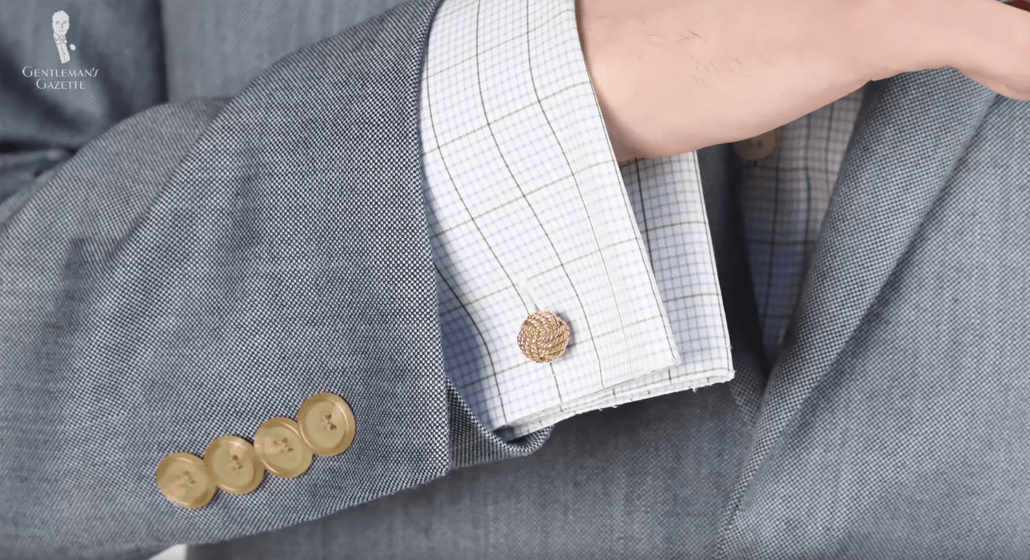
Two Principal Types Of Link Cuffs
Single Cuffs
Single cuffs which are just one layer of fabric fastened together with a link are standard for the white tie dress code and are also acceptable for black-tie if not necessarily standard at this point in time.
Double Cuffs
Double cuffs, are twice as long and are worn folded back upon themselves. They’re the standard choice these days for the Black Tie dress code and are also a staple of business wear. If you haven’t guessed it yet, double cuffs are more commonly known as French cuffs.
Other Kinds Of Cuffs
There are also a few other kinds of cuffs such as convertible cuffs which can be closed with either a button or a link depending on how you’d like to wear them.
And finally, you may also sometimes see a buttoned cuff that has excess fabric that can be turned back upon itself. This is known as a turn back cuff, cocktail cuff or sometimes a James Bond cuff.
French Cuffs Construction
As we already mentioned, French cuffs feature a length of fabric that is folded back upon itself and then fastened together with cufflinks, There are holes on both sides of the cuff going through all the layers of fabric. In other words, most French cuffs will typically have four holes in total to a cuff. Some manufacturers however will include more holes on the inner portion of the cuff for a total of six. This was originally done so that if there was wear or staining on the edge of a cuff a man could adjust it in the middle of the day without having to worry about looking at that staining.
One such manufacturer to offer these six holed French cuffs is the British retailer Charles Tyrwhitt. As I’m a frequent wearer of their shirts and many of them are in my closet I’ll use these adjustable cuffs on jackets that I have where the sleeves aren’t quite as long. That way the cuffs won’t come out from beneath the sleeves of the jacket when I’m moving my arms around. Some shirt makers may also include a button on the inside of the French cuff to make things more secure and to make inserting links a little bit easier. This button on the inside of the cuff isn’t to be confused however with a gauntlet button which is featured on some shirts a little bit further up the sleeve.
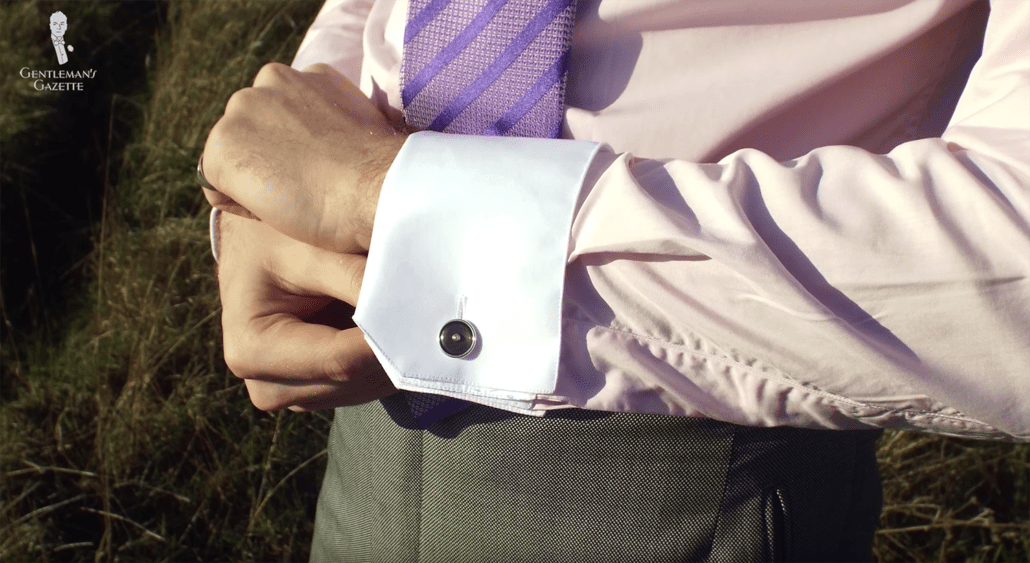
French cuffs can come in a number of shapes as can other cuff styles. Straight edges are most common for French cuffs but you’ll also see rounded edges, angled edges or mitered edges.
Why Are They Called French Cuffs?
To answer that question, we have to touch on the history of the double cuff. Since at least the 16th century, upper-class individuals used elegant ribbons to prevent the ruffled ends of their shirt sleeves from coming open. This practice of adorning the wrists with some sort of decoration continued throughout the centuries. By the early 19th century, when the modern style of shirt was coming into its own, the ruffles had been replaced with cuffs that were secured with links.
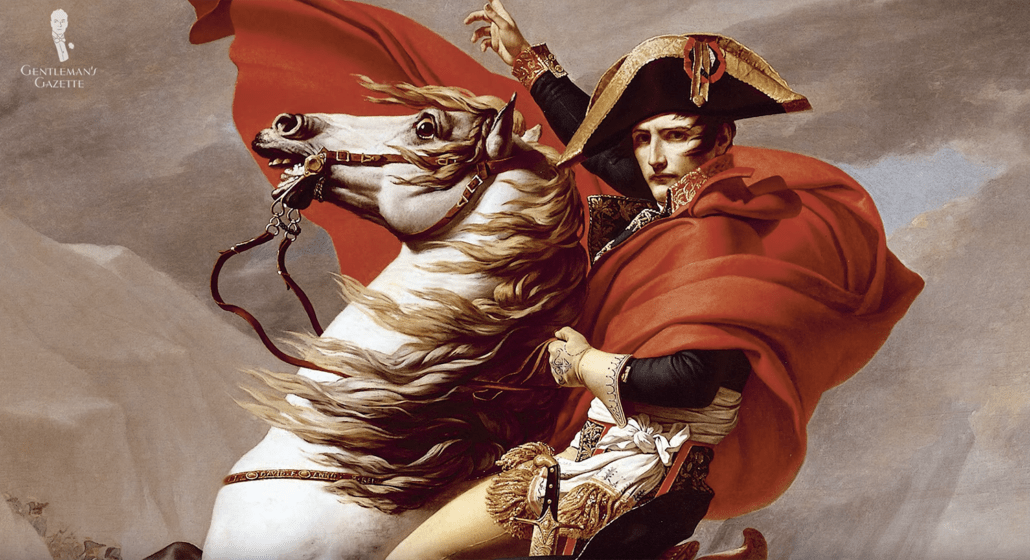
As an example, Alexandre Dumas 1844 novel, The Count of Monte Cristo, features the character of Baron Danglars, a banker who wears ornate cufflinks with his double cuffed shirts. One apocryphal story also claims that French cuffs got their start when Napoleon ordered extra long sleeves for the shirts of the soldiers in his armies so that they could wipe their noses on the ends of their sleeve and then fold their cuffs back. There isn’t any historical evidence to support this theory however so it’s really just more of a fun story.
Whatever the case, the term French cuff didn’t really come into popular usage until the style immigrated to America. In other words, it may just be that calling it a French cuff made it sound a little bit more exotic and special to American consumers. And from then on the term stuck and it’s the one that’s most commonly used today.
Style Guidelines For Wearing French Cuffs
The traditional view on this subject is that French cuffs should really only be worn in more formal scenarios, such as if you’re wearing black tie or if you’re wearing a conventional business suit and necktie. Some will even argue that wearing French cuffs with a blazer or sport coat is a stretch.
However, as standards of everyday dress have become more relaxed over the last half century and within the last 10 to 15 years, we’ve seen a resurgence in the interest in menswear. Some of these old style rules are able to be more freely bent now. So even though some traditionalists might give you a little bit of a questioning look, we believe that you can definitely pull off French cuffed shirts in more casual environments than just black tie or white collar business suits.
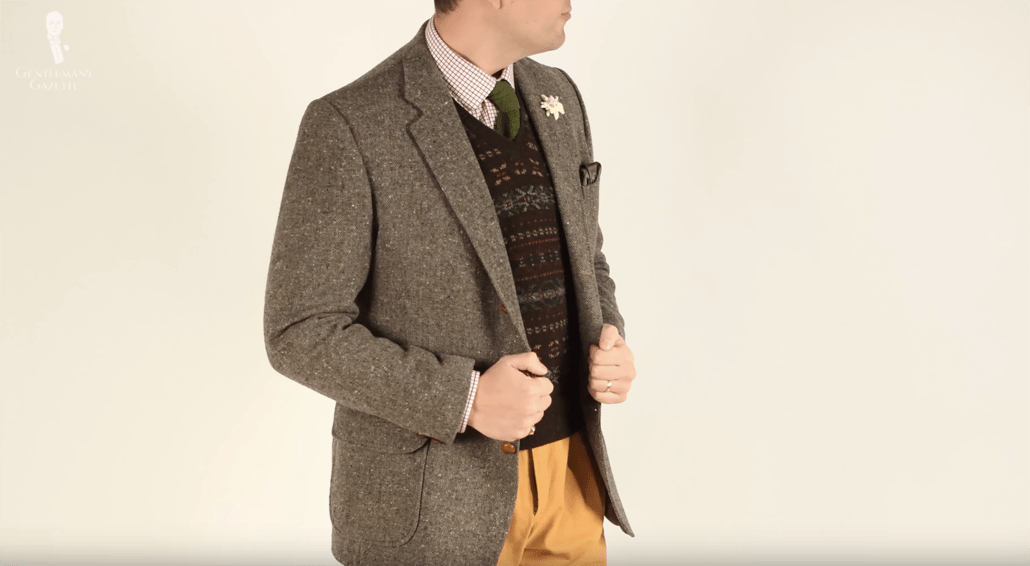
As just a few examples of this, fashion designer Tom Ford has worn French cuffs without a tie for a number of years now. And here at the Gentleman’s Gazette, our founder Sven Raphael Schneider, estimates that he wears French cuffed shirts around 75% of the time. Also, I personally am a big fan of smart casual styled French cuffed shirts and almost all of my everyday shirts have French cuffs.
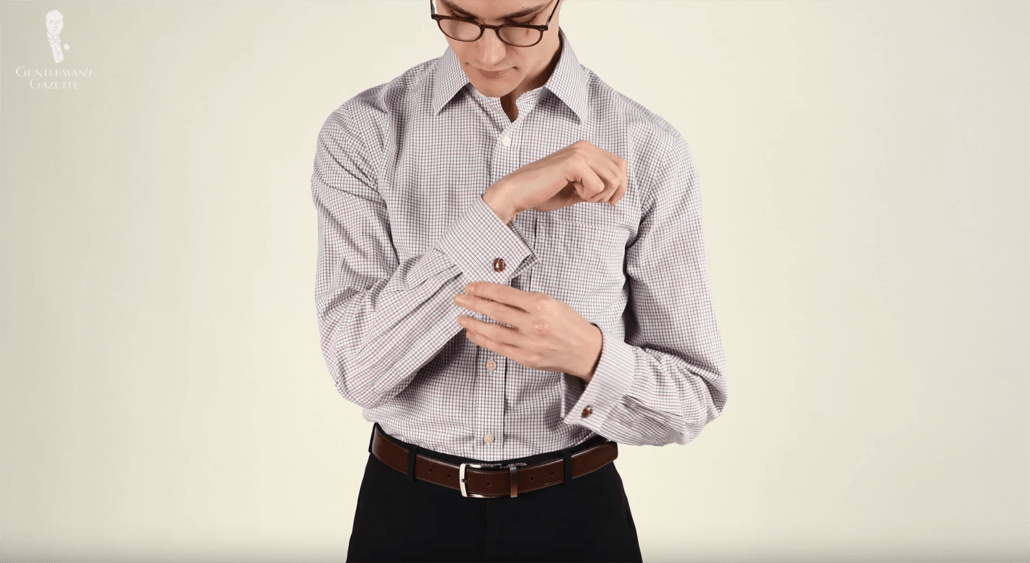
I believe that wearing them with some fun cufflinks to provide a breezy vibe is a great way to show off a little bit of personal expression without being overpowering. In fact, a typical everyday ensemble for me is a French cuff shirt worn without anything over the top of it in addition to a pair of slacks and shoes and so on.
If you wanted to really go to the nth degree with this you could even emulate Italians who go for the sprezzatura style of dressing. They’ll wear French cuffed shirts unfastened over the ends of their jacket sleeves. This is a little bit of an extreme look of course but we just wanted to make you aware that the look is out there, so French cuffs are definitely more versatile than they used to be.
Tips On Wearing French Cuffs
First of all, it’s always a good idea to show at least a little bit of cuff at the end of whatever you’re wearing. Be that a suit jacket, a blazer, a sport coat or even a sweater. You could shoot for keeping a quarter to a half inch of shirt sleeve visible at all times under these types of garments just to make sure that people know that you intentionally wore French cuffs. Keep in mind though, that if you’re wearing something with more constricted sleeves such as a sweater you may want to orient the cuffs a little bit differently.
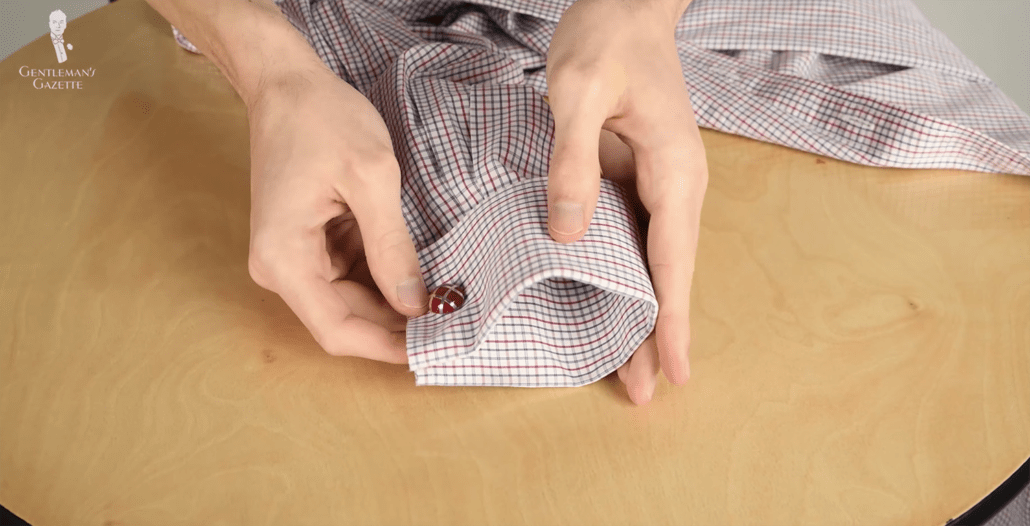
Where French cuffs are usually worn in the so-called kissing style with the inside portions of both sides of the cuff together, they can also be configured more similarly to a barrel style and this is a convenient way to do it if you’re wearing something like a sweater. And of course, there are a wide variety of different kinds of cufflinks to go with your French cuff shirts to suit the occasion. You should aim for a balance between your own sense of personal style and the formality of the environment you’ll be in. There are all kinds of metal cufflinks of course, in materials like gold, silver, platinum and so on. And at the other end of the spectrum there are simple fabric knot styles of cufflinks also called silk knots that are definitely more casual.
CONCLUSION
To answer the question of when it’s appropriate to wear French cuff shirts? The short and simple answer is almost whenever you want with a few key exceptions. As we said, just make sure that the French cuffs and their accompanying cufflinks don’t overpower or dominate the outfit you’re wearing. Use a little bit of discretion and you’ll have a wide variety of situations where cufflinks and French cuff shirts are appropriate.
What’s your personal opinion of French cuff shirts and how often do you wear them? Do you have any other styling tips related to French cuffs?
Be sure to let us know in the comment section below.
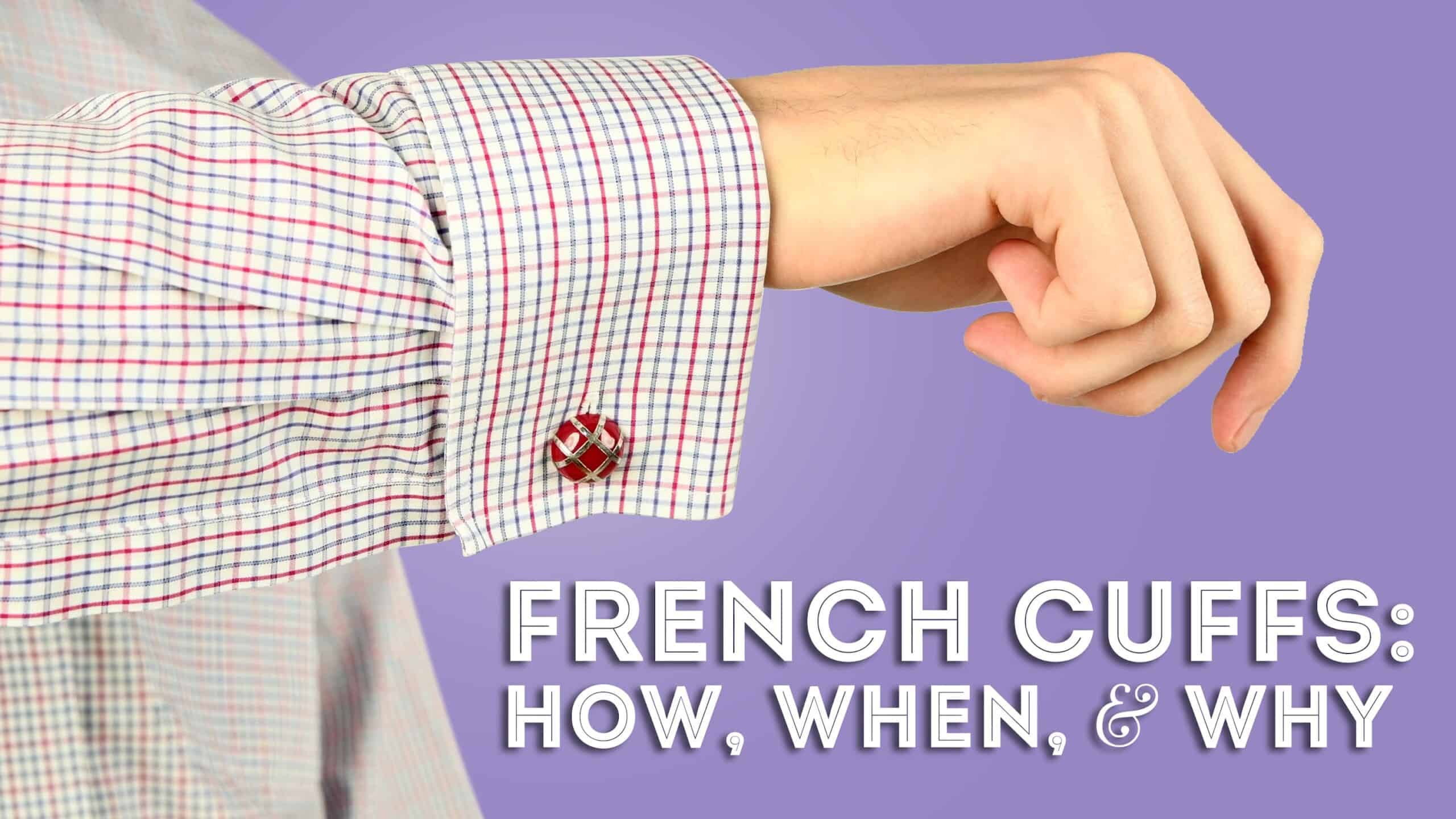
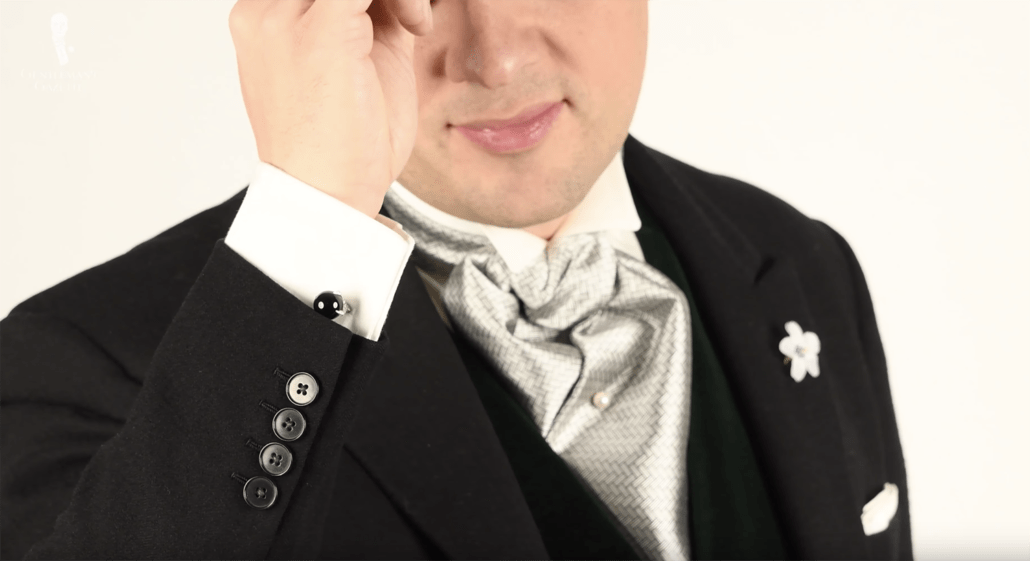
For years, I wore double cuffs as we call them over with a variety of cufflinks. It was expected formal business wear in London.
As dress codes have become more relaxed I have stopped wearing a suit everyday and so I do not have to wear double cuffed shirts but I do like the idea of cufflinks : there are some fabulous designs. It is one of those discreet pieces of men’s jewellery that I do enjoy.
Getting shirt arm lengths right is quite key to pulling off the double cuff/cuff link look. I think you need the jacket/coat to end shorter than the shirt so that you show about half an inch of cuff with the cuff ending on the wrist and not straying down on to the hand.
I wear French cuff shirts daily. The only exceptions are casual wear flannel shirts in the winter. I have a passion for collecting cufflinks and only French cuff shirts will do. I wear them with suits, blazers, and odd jackets. I will wear them with sweaters too. People who know me well will actually lift back my jacket to see the links I have on. My collection is about 200 pairs. My current favourite maker of French cuff shirts is Charles Tyrwhitt.
Thanks for sharing!
Love French Cuffs and never miss a chance to wear them. Well done and thank you!!
RE: Cuffs
When wearing a suit or sport coat, I know you should have just a bit of cuff extending beyond the end of the sleeve. I can never get mine to stay that way though. They invariably retract back up into the sleeve. It doesn’t seem to matter the length of sleeve, whether it’s a 31″ or a 34.” I’d sure appreciate some advice on what might be going on!
Dear Don
This one has me thinking about the small button and hole that is about 3″ behind the cuff . It has been put there to align the sleeve to your fore arm .
If your shirt has this ; quality makers put it there for the reason of the sleeve not withdrawing . If you have it do it up .
There are three important choices a man must make in life: his profession, his insignificant other, and his cufflinks. Obviously, the last is most important..It is by the judicious use of cufflinks, that a man can keep it all together. Thus endeth the sermon.
I very much enjoy wearing cuff links, and have collected numerous pairs throughout the years. Upon the death of an aunt in 2005, I inherited many pairs of earrings set with fine gems. I took various pairs of earrings to my jeweler in NYC, and without much alteration, I had the earrings turned into cuff links. This idea worked great, and I have mentioned this to numerous people who have, as well, inherited various earrings. As well, the same jeweler converted a cabochon and diamond bracelet into a pair of formal cuff links and studs.
Personally for me it is French Cuff with suits and the formal gear I have ; except in the height of summer and I wear light weight with barrel cuffs
I have tried sport coat or blazer with Double Cuff and always feel like I am over doing it .
Some chaps like to collect cuff links ; for me it is Jazz LP’s I love my vintage ( 60yo ) Tiffany Dumb bells and stick to those and a nice cuff and studs vintage mother of pearl .
The shirt man is Paul Fredrick in Fleetwood PA , endless variety and sizes .
Tom Ford is a tosser, not an example for GG to look up to
Why do you say that? I suspect the GG writers might disagree, given that two of their articles are devoted exclusively to him.
Most of my dress shirts are made-to-measure. I eschewed the use of French cuffs several years ago in favor of Link cuffs. I can still wear my cuff links without all that excess material.
I had never heard of wearing a French-cuffed shirt with the cuffs closed in barrel style before I watched this video. I think if I had observed such a thing, I would have thought it a faux pas—either a case of not knowing how to close the cuffs or a case of wearing the wrong kind of cuff for whatever garment was going over the shirt. But then, the only French-cuffed shirts that I own are my formal shirts for evening wear, so the mode of dress is not one with which I have much experience. I would be interested in knowing, though, whether wearing the cuffs closed in barrel fashion is a widely done thing or not.
I make many French cuff shirts for my customers in a variety of ways. The convertible cuff is a favorite among some of the old timers. Some prefer the single fold French cuff.
This is a fine explanation of the French cuff. But I think there should have also been a comment as to the enhanced ease of installing cuff links with just one face rather than two, utilizing a hinged post that extends through the holes from the front of the cuff to the back, and then part of which swivels 90 degrees to lock in place. I realize this design is not totally de rigueur, but it certainly makes cuff links easier to install…and no one but the wearer is aware of their use. Years ago I ordered a bespoke pair from Longmire in London, the world’s “gold standard” maker of cuff links, and I think they were horrified when I specified links as described above. I think the only time when two-sided links are absolutely necessary is when one wears the wing collar shirt with white tie.
Excellent video, thanks for posting.
I’m a fan of and prefer wearing French Cuffs whenever possible. I like the look and cufflinks are the only real jewelry-type accessory I wear, next to a watch, which allows me further latitude to express my personality.
I wear them in the traditional “kissing style” for more formal occasions and “barrel style” for more casual. I’m eager to read and appreciate everyone’s thoughts.
I wear French cuffs always with a suit and single cuffs without a suit if going to office. I have two different style cufflinks matching my glasses that are bespoke handmade of sapele wood. If I want to piss off my vegetarian and otherwise artsy types in the office – I wear Colt.45 cartridge end cufflinks. Only for flannels I still use the button version. My shirt maker usually leaves makes combination single cuffs, so it is easy to cut away the buttons and use the holes for cuff links.